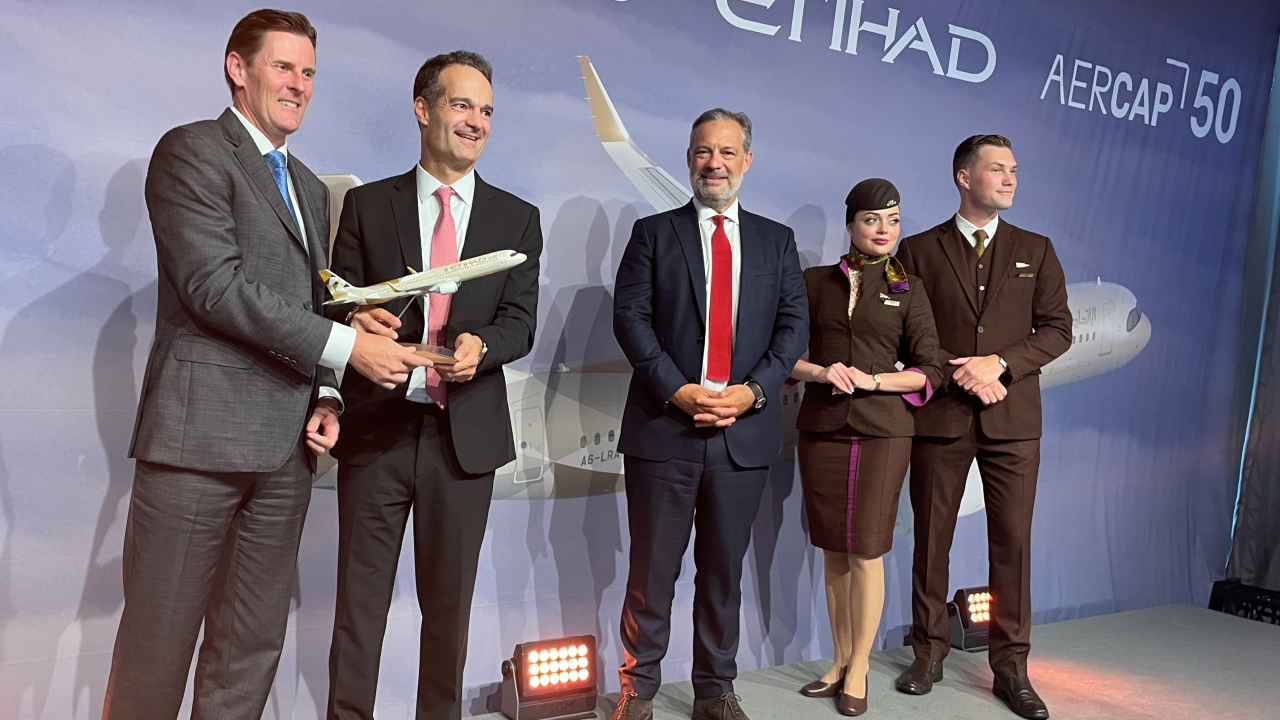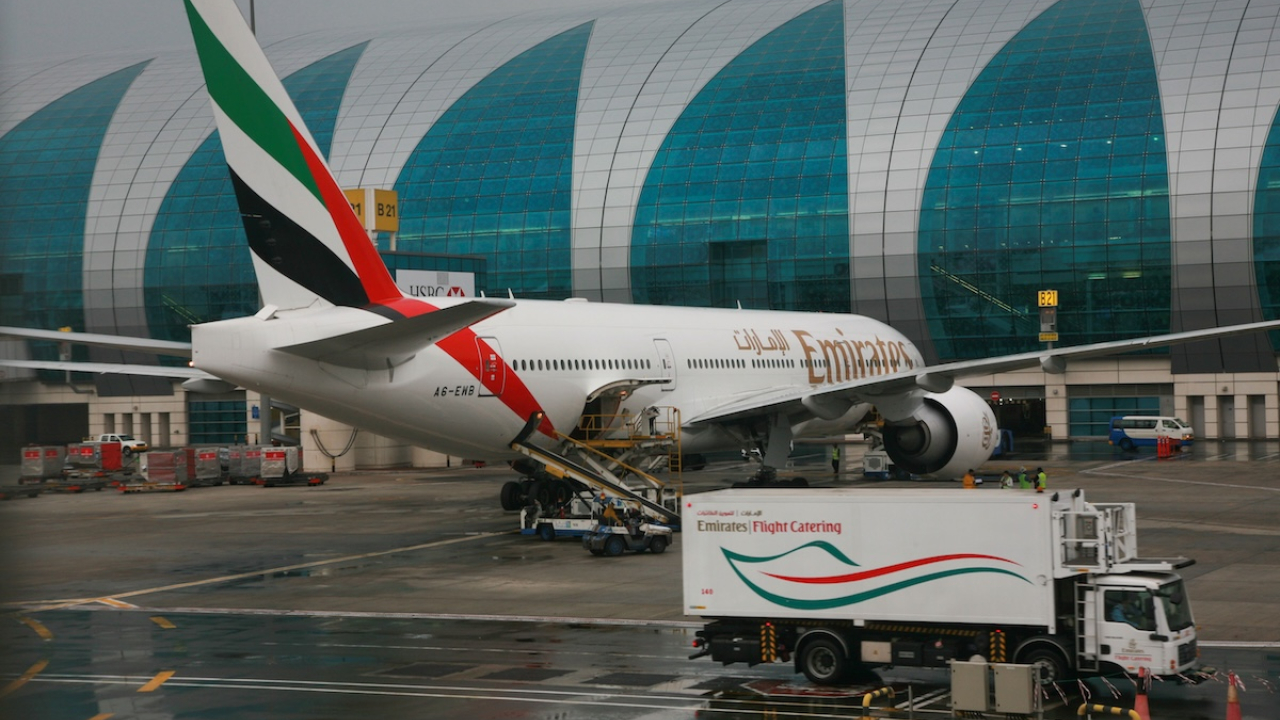Etihad aims to reduce new route risk with incoming A321LRs
Etihad Airways is planning to open a slew of routes using its fleet of new Airbus A321LRs over the coming few years, according to the carrier’s CEO Antonoaldo Neves.

Peter Anderson (left), chief commercial officer of AerCap, Antonoaldo Neves, CEO of Etihad (second left), and Airbus head of sales Benoît de Saint-Exupéry, swap gifts at the A321LR delivery ceremony (photo: Mark Pilling).
Speaking at the delivery ceremony of its first A321LR in Hamburg on 24 July.
“This aircraft is going to strengthen Etihad’s network, allow us to experiment, and create new destinations that are underserved today or not served,” explained Neves.
“Another important point is to provide the customers with frequency. It is extremely important to understand that Etihad is playing a frequency game. We're not playing the gauge game,” he added, where routes are served just with larger widebodies.
“We want to have four flights a day to most destinations in the Middle East and India. We want to have two flights a day to Southeast Asia, two flights a day to Europe and two flights a day to the USA,” said Neves.
There will be routes with higher daily frequencies where a combination of widebodies and narrowbodies suits traffic demand patterns, which is a common airline strategy, he noted.
The difference for Etihad with its A321LRs is they are delivered with two first class suites and 14 lie-flat business class seats. “What these aircraft bring is consistency” with passengers finding the same first or business class product on board its widebodies and its A321LRs, said Neves.
“Our strategic intent when we design our network is to achieve different objectives than other airlines. We are trying to make sure that we have a position that is really differentiated,” he stated.
Etihad believes there are numerous unserved destinations in Europe and Southwest Asia that are viable because the per seat cost of the A321LR is very similar to that of a widebody.
“The A321LR helps to mitigate a lot of risk on the capex side because instead of trying to open new destinations with a widebody, which requires more capex, we open the new destinations with an Airbus A321LR,” said Neves.
“This aircraft is going to have the mission to open new markets, not because Abu Dhabi doesn't have the potential, but because we are going to grow those markets, and in the future, we can upgrade them and put a widebody on them,” said Neves.
“We are very confident that the product and this aircraft is going to provide us great profitability,” he added.
Stay up to date
Subscribe to the free Times Aerospace newsletter and receive the latest content every week. We'll never share your email address.

